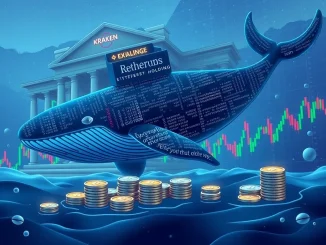
In the often-opaque world of high-stakes cryptocurrency trading, few things are as compelling as a prominent figure facing scrutiny over their positions. The latest saga involves **James Wynn**, a well-known **crypto whale** on the decentralized exchange **Hyperliquid**. Reports surfaced suggesting a significant event: another **liquidation**. However, Wynn himself has publicly denied these claims, setting up a classic conflict between personal statements and verifiable **on-chain data**.
Did the Hyperliquid Whale Face Another Liquidation?
According to reports from blockchain analytics firm Lookonchain, shared widely on social media platform X, **James Wynn**, a major trader on **Hyperliquid**, allegedly experienced another **liquidation** event. This report followed Wynn’s previous declaration that he would halt trading after a substantial loss, estimated at around $100 million.
The recent Lookonchain report specifically pointed to a wallet believed to be associated with Wynn. The analytics firm stated that following the alleged **liquidation**, assets from this wallet were deposited into a KuCoin exchange address.
James Wynn’s Denial vs. On-Chain Data
Despite the public report and the accompanying analysis, **James Wynn** has reportedly denied that he was liquidated. Furthermore, he claimed that the specific wallet identified by Lookonchain as the source of the KuCoin deposit does not belong to him. This creates a direct contradiction between the trader’s statement and the publicly available information being analyzed.
However, Lookonchain maintains that the **on-chain data** strongly suggests the wallet is indeed connected to Wynn. Their analysis is based on transaction history and patterns associated with known addresses.
What the On-Chain Data Reveals
The power of blockchain technology lies in its transparency. While wallet ownership can be pseudonymous, transaction histories are immutable and publicly viewable. The specific **on-chain data** cited in this case involves a recent transfer from the wallet in question to a KuCoin deposit address.
According to transaction records analyzed by Lookonchain, approximately 1.152 ETH (valued at around $2,910 at the time of the report) and 137,000 USDC were sent from the disputed wallet to a KuCoin address about 21 hours prior to their report. This type of transfer, especially following reported trading difficulties, is often interpreted by analysts as moving remaining funds to a centralized exchange, potentially after facing losses on a decentralized platform like **Hyperliquid**.
This specific transaction is the core piece of **on-chain data** that analysts are using to challenge **James Wynn**’s denial of the **liquidation** and wallet ownership.
Challenges and Transparency for a Crypto Whale
Being a high-profile **crypto whale** comes with significant challenges. Large positions can attract intense scrutiny, and trading performance is often tracked by the community and analytics firms. The transparency offered by **on-chain data**, while a benefit for the ecosystem’s integrity, means that large movements and potential trading outcomes, like a **liquidation**, are often visible to the public eye, regardless of a trader’s public statements.
This situation highlights the ongoing tension between privacy claims and the inherent transparency of blockchain. For traders on platforms like **Hyperliquid**, understanding that their actions, particularly large ones, can leave a clear trail via **on-chain data** is crucial.
Conclusion: The Data Speaks Loudest?
The reported situation involving **James Wynn** on **Hyperliquid** serves as a compelling example of how **on-chain data** can provide an alternative perspective to personal accounts in the crypto space. While Wynn denies the **liquidation** and wallet ownership, the transaction records offer a different narrative. This saga underscores the importance for traders and observers alike to look beyond headlines and public statements and consider the verifiable information available directly on the blockchain when assessing claims in the volatile world of **crypto whale** trading and potential **liquidation** events.



